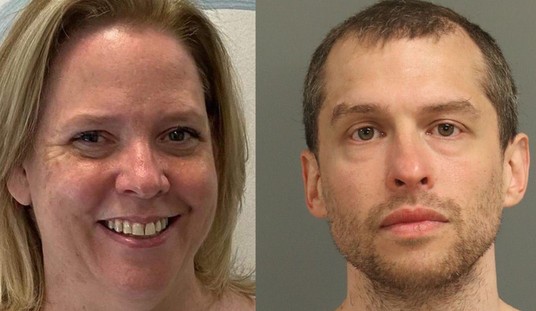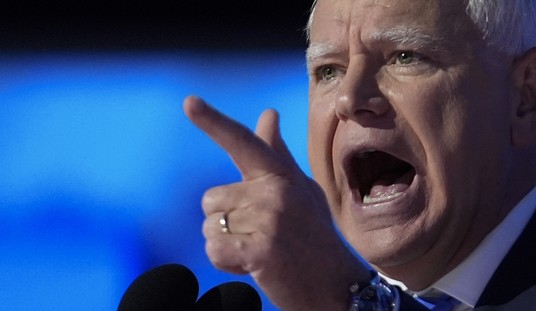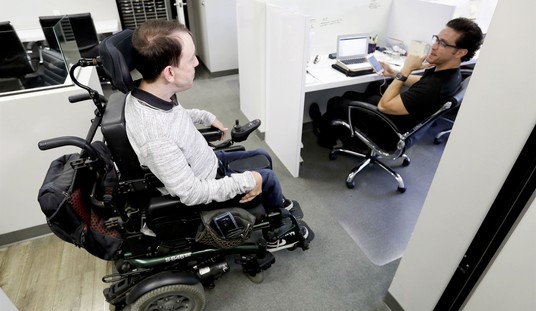Today being the completion of one year of Sunday Gun Day, I thought it appropriate to talk about a big figure in shooting in the 20th century and into the 21st. So, to that end, I give you a singular figure. Next week, a new volume of Sunday Gun Day begins!
Blessed be those who, in the face of death, think only about the front sight.
A Man Among Men
Today we’re here to talk about a singular figure in the gun world, USMC Lieutenant Colonel John Dean “Jeff” Cooper: Big-game hunter, writer, combat Marine, guntwist, shooting instructor, horseman, and perhaps history’s staunchest proponent of the Colt/Browning 1911 and the .45ACP cartridge, and the subject of this final chapter of Sunday Gun Day, Volume 1.
Note: The italicized text in this installment represents quotes from the man himself, of which pithy bits of wisdom Colonel Cooper left a surfeit.
One bleeding-heart type asked me in a recent interview if I did not agree that ‘violence begets violence.’ I told him that it is my earnest endeavor to see that it does. I would like very much to ensure – and in some cases, I have – that any man who offers violence to his fellow citizen begets a whole lot more in return than he can enjoy.
Origins
Cooper was born in Los Angeles on May 10, 1920, to a well-off family who had a summer home on Catalina Island, where the young Cooper ran free and developed a liking for the outdoors that would stay with him for the rest of his life. There he acquired his first rifle, a Remington .22 rimfire that he kept for the rest of his life.
While in later years he was bitterly critical of the city of his birth, in his youth he attended Los Angeles High School, where he was enrolled in the Junior ROTC program, motivated in part by the fact that they gave free .22LR ammo to members of the rifle team. He went from there to Stanford University, where he picked up a degree in political science, and along the way was commissioned in the United States Marine Corps as a Second Lieutenant in September 1941.
One might note the significance of that date. Young Lieutenant Cooper attended Basic School and, when World War II broke out, was assigned to the battleship Pennsylvania, which spent most of the war doing shore bombardment duty. In 1942 he married his wife Janelle, to whom he stayed married until he died in 2006, a marriage of 64 years.
See Related:98-Year-Old WWII Vet Brings the House Down at RNC: If Trump Were President, I Would 'Re-Enlist Today'
After the war, he began a lifelong career in teaching as a staff instructor at the Marine Corps Command and Staff School at Quantico.
He resigned his commission and left the Corps in 1949 but returned in 1950 at the outbreak of the Korean conflict, in which he specialized in “clandestine operations,” the nature of which remains somewhat vague.
The consensus is that no more than five or ten people in a hundred who die by gunfire in Los Angeles are any loss to society. These people fight small wars among themselves. It would seem a valid social service to keep them well-supplied with ammunition.
His Adventurous Career
After leaving the Marine Corps for the second time, Colonel Cooper took his family to Big Bear Lake in Southern California. That town had an annual shindig known as “Miner’s Days,” one attraction of which was the one Cooper organized, a “Leatherslap” fast-draw pistol competition. In those days typical quick-draw events used blanks and were only intended to show how fast the gunsel could draw and slap the trigger, but Colonel Cooper had other ideas. He insisted on live ammo and paper silhouette targets at a range of seven yards, asserting that the purpose of shooting was, after all, to hit a target.
The Leatherslap event became a hit, moving from an annual to a monthly event. At first, single- and double-action revolvers dominated the competition; only Cooper and another worthy named Hugh Carpenter favored autoloaders, in both cases the 1911 Colt .45. One year a deputy sheriff named Jack Weaver shocked the competitors by winning decisively shooting with his gun held in both hands instead of one, an event which may have changed handgunning for keeps.
 In those days, most handgun shooting, informal and formal, was a one-handed affair. There were exceptions; in his book "Sixguns" there is a photo of a young Elmer Keith employing a two-handed stance while shooting a .44 caliber revolver. But Jack Weaver developed and perfected a stance that came to be named after him: The weak-side foot advanced slightly, narrowing the shooter’s profile to the target; the supporting arm elbow slightly bent, firing arm fully extended.
In those days, most handgun shooting, informal and formal, was a one-handed affair. There were exceptions; in his book "Sixguns" there is a photo of a young Elmer Keith employing a two-handed stance while shooting a .44 caliber revolver. But Jack Weaver developed and perfected a stance that came to be named after him: The weak-side foot advanced slightly, narrowing the shooter’s profile to the target; the supporting arm elbow slightly bent, firing arm fully extended.
Colonel Cooper took the Weaver stance and incorporated it into what came to be known as the Modern Technique. Police departments and military organizations from Canada to Brazil sought him out to provide instruction, to the point at which Cooper was rarely home with his family. So, in 1975, he bought a 200-acre chunk of land near Prescott, Arizona, and opened the American Pistol Institute, which later evolved into the famed Gunsite Academy, a school for small arms of all sorts. At Gunsite, Cooper taught not only marksmanship but discipline and hard rules for shooting and surviving possibly lethal encounters. Early on he formulated his color code for personal situational awareness:
- In White, you are unprepared and unready to take lethal action. If you are attacked in White, you will probably die unless your adversary is totally inept.
- In Yellow, you bring yourself to the understanding that your life may be in danger and that you may have to do something about it.
- In Orange, you have determined upon a specific adversary and are prepared to take action which may result in his death, but you are not in a lethal mode.
- In Red, you are in a lethal mode and will shoot if circumstances warrant.
He also advocated four rules of gun safety which are ubiquitous today, although these rules were almost certainly not his invention; my father drilled into me the same rules beginning in the late '60s and always said he learned them in the Army:
- All guns are always loaded. Even if they are not, treat them as if they are.
- Never let the muzzle cover anything you are not willing to destroy. (For those who insist that this particular gun is unloaded, see Rule 1.)
- Keep your finger off the trigger till your sights are on the target. This is the Golden Rule. Its violation is directly responsible for about 60 percent of inadvertent discharges.
- Identify your target, and what is behind it. Never shoot at anything that you have not positively identified.
During his time at Gunsite, Colonel Cooper came up with two major concepts in firearms, both, interestingly, in rifles: The “Scout Rifle,” and the “Crumpler.”
Cooper’s Scout Rifle was a simple piece: A short bolt-action, a mid-length (usually 20”) barrel, firing a military rifle cartridge, usually the .308. These guns were fed by a detachable box magazine and had an intermediate-eye-relief scope mounted ahead of the action, backed up by a “ghost-ring” peep sight and blade front.
Steyr was the first to make a production version, but while Steyr had an excellent reputation for quality arms, the Steyr Scout rifle was expensive and ugly. Cooper nevertheless received one of the first rifles off the line and was reportedly quite pleased. Nowadays Ruger, Mossberg, and Savage, among others, make their own versions of the Scout concept.
The other brainchild of Colonel Cooper was a heavy big-game stopper, exemplified by his own “Baby,” a Brno ZKK bolt gun chambered for the wildcat .460 G&A cartridge. The “Crumpler” was intended to be a heavy rifle of intermediate length, easy to pack and handle but powerful enough for anything living on the planet.
But when it came to handguns, Cooper remained an aficionado of the Colt 1911 and the .45ACP. He reportedly said, “The 1911 pistol remains the service pistol of choice in the eyes of those who understand the problem. Back when we audited the FBI academy in 1947, I was told that I ought not to use my (1911) pistol in their training program because it was not fair. Maybe the first thing one should demand of his sidearm is that it be unfair.”
In those days, the FBI was using a .38 caliber revolver as a service piece; in such company, the 1911 would certainly stand out. Cooper experimented with a variety of sidearms in his life and career and always came back to the 1911.
Don’t try to be fancy. Shoot for the center of mass. The world is full of decent people. Criminals we can do without.
His One-Man War
Later in his life, Cooper did an enthusiastic verbal battle with proponents of gun control laws. He coined the term hoplophobe: “a mental aberration consisting of an unreasoning terror of gadgetry, specifically, weapons.”He had a low opinion of the criminal element, routinely referring to street criminals as “goblins” and advocating for lethal response by citizens against criminal attackers.
See Related:Sick: Anti-Gunners Exploit Trump Assassination Attempt to Push Gun Control
Cooper was very active in the 2nd Amendment movement, serving as a director of the NRA in addition to his Gunsite duties. As in all things he was tireless, vocal, and blunt in his advocacy, often angering his opponents (and sometimes his allies) with his contempt for those who he viewed as too weak to face an opponent and fight rather than submit.
I am sometimes perplexed by people who refer to defensive rifles, or defensive rifle shooting. His defensive arm is the pistol since you have it at hand to meet situations that you do not anticipate. If you have the luxury of anticipating a lethal encounter, you pick up a long arm, whether a rifle or a shotgun, but in that case, you go on the attack. Thus, rifle shooting is offensive, and pistol shooting is defensive.
His Golden Years
In 1992, Colonel Cooper sold Gunsite to a former student on the condition that he remain in charge of daily operations. This retirement that wasn’t at times rankled Cooper, who was accustomed to being wholly in control, and he later came to view the sale as an error. He didn’t let the decision weigh on him, though, and continued teaching in between hunting trips all over North America and Africa.
Jeff Cooper died in 2006, aged 86.
Colonel Cooper was a man of strong, sometimes inflexible opinion. While many disagreed with some of his opinions, others agreed enthusiastically with his every utterance. One might suppose this is common with such outspoken, public figures. Colonel Cooper himself, were he around to read these words, would no doubt tell us in no uncertain terms what he thought.
Personal weapons are what raised man out of the mud, and the rifle is the queen of personal weapons. Pick up a rifle – a really good rifle – and if you know how to use it well, you change instantly from a mouse to a man, from a peon to a caballero, and – most significantly – from a subject to a citizen.
His Works
Col Cooper was a moderately prolific author; his works include:
- Another Country
- C Stories
- Fire Works
- Shotluck
- To Ride, Shoot Straight, and Speak the Truth
- Yukon Journal
- Principles of Personal Defense
Every one of his books is worth the read.
Love Col. Cooper or hate him, he was a larger-than-life figure, one of the twentieth century’s most influential advocates of personal, armed defense, a man who changed how we look at the handgun as a personal defense weapon and a man who commanded respect from friends and foes alike. A considerable amount of ink has been spilled praising and condemning Cooper, and it seems likely that the man himself would have not given a damn about either. To put it in his own words:
A smart man knows he can only believe half the things he hears. A wise man knows which half.
As noted, next week begins Volume 2 of Sunday Gun Day. Have you any particular people or topics you'd like to see covered? The comments are yours!














